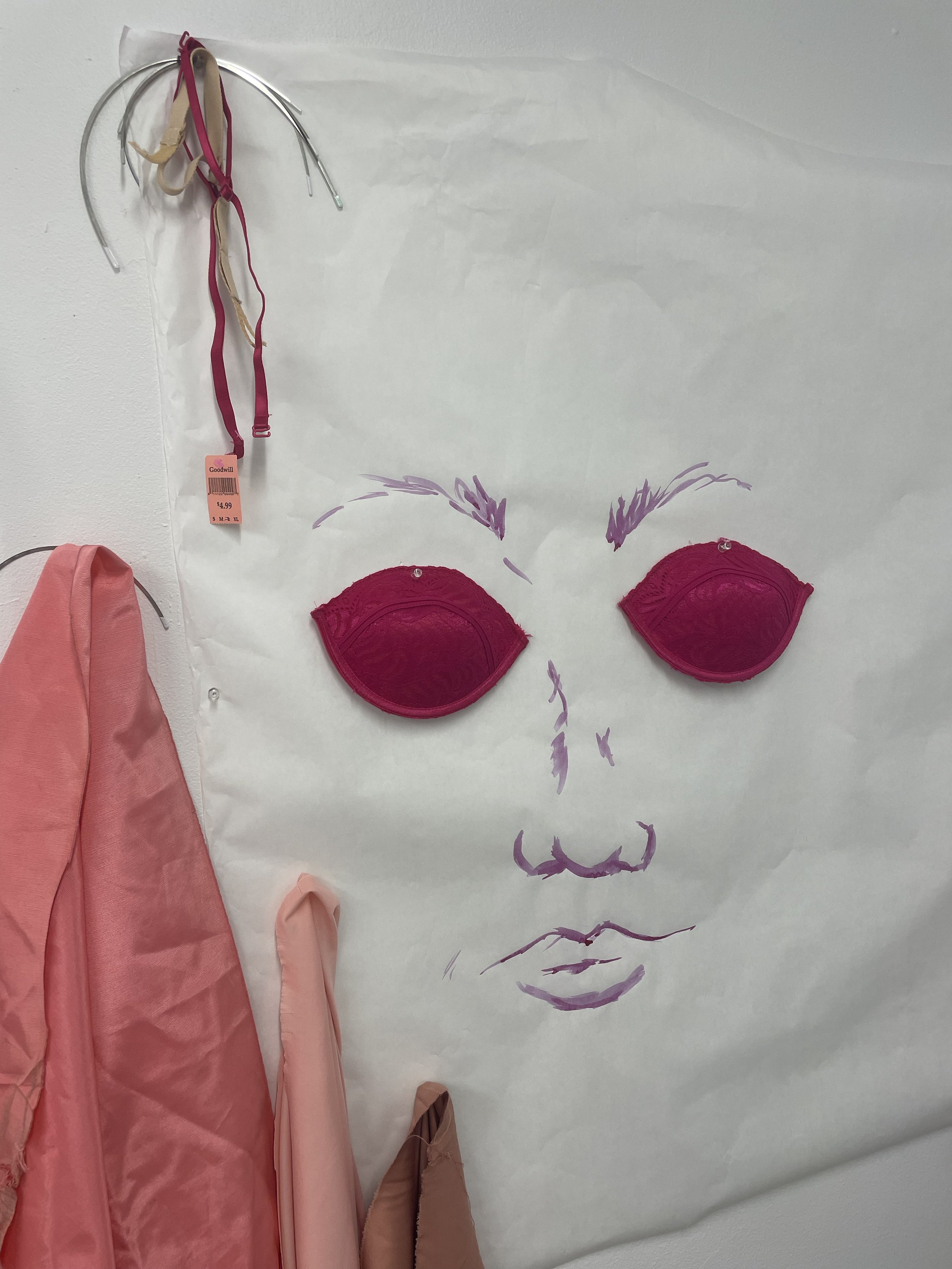Catherine Walker Interviews Kaleena Miller:
CW: How did you find yourself in tap dance?
KM: My family moved to St. Cloud MN in the early 80s, and my mom found some part-time employment at a local dance studio, assisting the director/teacher. I would hang out in a stroller as dance classes went on, and eventually Karla (the director/teacher) said something to the degree of “Let’s get her in some shoes!” I was 2.5 years old. I studied Ballet, Jazz and Modern as well, but Tap Dance always was the most satisfying form for me, and it always abstractly felt like home.
CW: In this moment of broadening your artistic expression, what are you excited about? Material? Subject matter?
KM: I am excited to solidify some new directions…my head is everywhere right now. Fabric! Wood! Graphic scores! Video! Audio! Costume! Don’t get me wrong - considering the endless options is exciting, but it’s a little exhausting.
With / within all of these possibilities, I’m thinking about the expansiveness of sound and movement, and how it can materialize in a physical, non-human form. I’m thinking about the implied sound that material and shape have; how looking at an object and considering it is a form of improvisation - it doesn’t necessarily formally become a song or dance, per se, but I feel like observation and thought swim around like bits of abstract movement and dance.
At the end of the day, I’m invested in Tap Dance as a medium to explore, and I’m hoping that these more material pursuits can complement or expand the practice that I’m really devoted to. We’ll see where I’m at in 3 year’s time.
CW: Will you talk a little more about the relationship between movement and sound?
KM: It’s my understanding that all sound comes from movement: the noisy air conditioner is spinning moving parts, humans vocalizing is body parts working together to sound, a nail getting hammered is loud and comes from a big movement and two hard objects meeting.
I think it’s important and interesting to care about sound, and that means considering the action behind it.
I just read an article about the Glasgow Improvisers Orchestra - it said their work requires “a type of social virtuosity: virtuosic listening and virtuosic decision making and problem solving”, and I think this resonates because of the care and thought that goes behind the movements that will ultimately sound. And also the care and thought that the audience needs to hold as well - removing expectations of what music needs to sound like.
CW: Please say more about American Apparel disco pants and why they deserve a funeral!
KM: Ha! They were SUCH A THING in dance performance as (I think) social media was just starting to pop. They were stretchy, high-waisted, and form-fitting - they stayed in place, you could move in ‘em, and they looked great on pretty much everyone. They became ubiquitous, and, for me, sort of attached to this idea of promotion for promotion-sake, just as an incredibly accessible platform for self-promotion (instagram) was starting to sky rocket. So it’s a slice of dance culture that I’m just ready to be done with: ego, self-promotion, narcissism. Plus, Dov Charney (American Apparel CEO) is a creep.
CW: In your reflections, you talk both about the acts of breaking and building. Breaking down yourself and your work, and building spaces for listening and community. I think this is an interesting dichotomy. Do you see them as connected and why or why not?
KM: I think 2019-2020 was sort of a breaking point for me - I was really burnt out and had lost scope of why I was doing what I was doing. And then, pandemic. And I moved to a new city. And there was re-building all around. I knew the structure of my previous version of life was not right, and, honestly, I’m still working it out. So I’m distilling…figuring out the elements that make my existence tick and feel meaningful. Breaking down my life to re-build it again.
’m doing the same in my medium of tap dance. I’m in a mode of thinking about the basic elements of tap dance steps and phrases - toe, heel, ball, slide, flam, etc - and using a run on sentence/“daily making practice” alongside chance operations to create new and unexpected patterns. I’m working to find an “elsewhere” / find new pathways / go against expectations of the form.
I ran 2 organizations in Minnesota - I ran them for “the community” - but I don’t know that I / we did it right. Was it to prove something for myself? Or was it TRULY for other people. Probably a little bit of both.
Both orgs are being re-imagined at the moment - trying to set up structures and carve out space that feels akin to our values, and not just based on what similar orgs have done before us. Focusing on setting up spaces, opportunities and programs that REALLY feel like the listening, sounding, and caring community that we’ve always dreamed of.
So, yeah! They’re connected for me - I can’t get to the re-build of work or the ideal community space without completely breaking down what IS or WAS.











